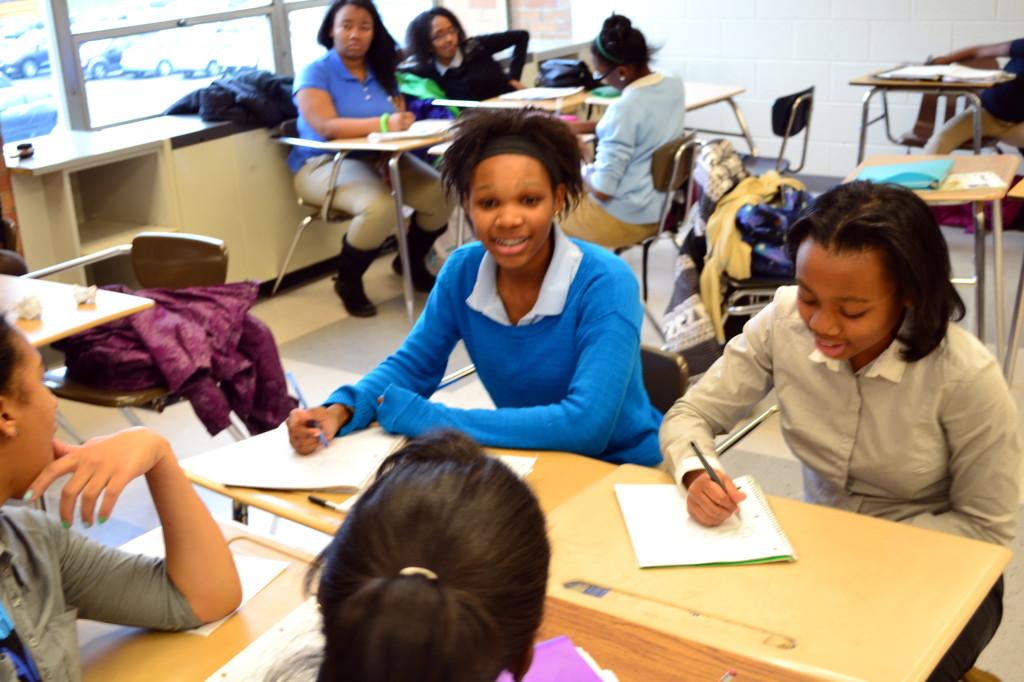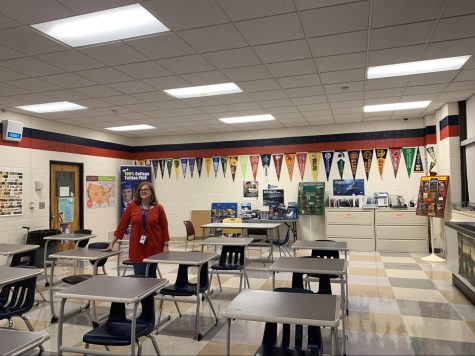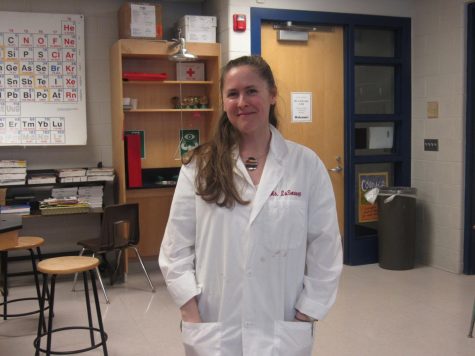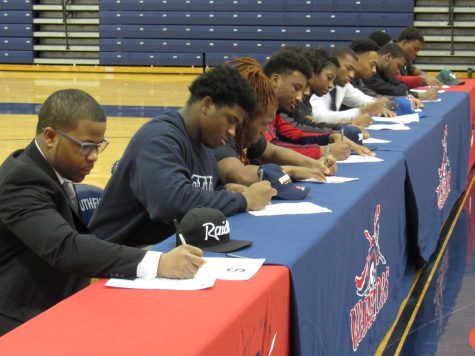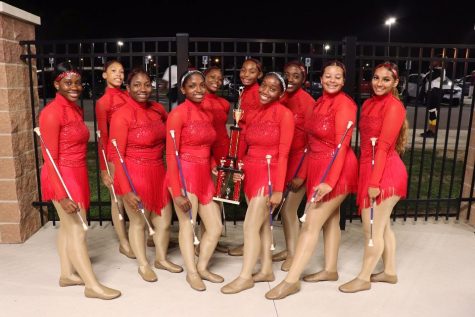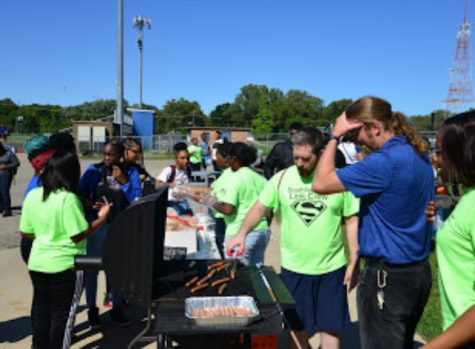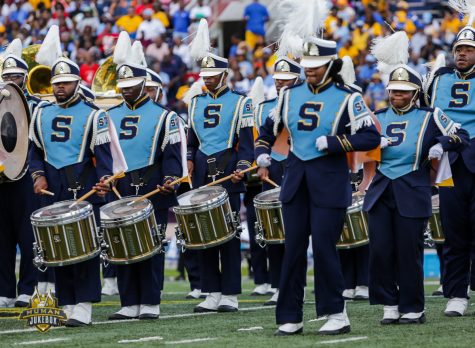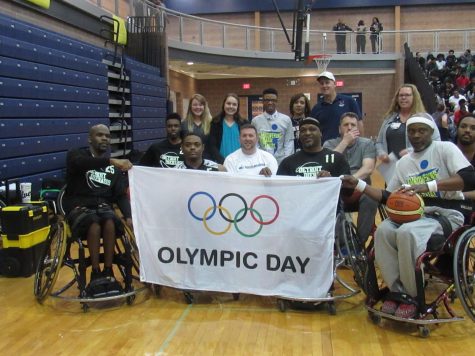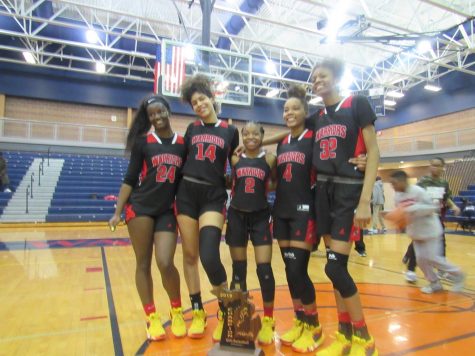Administrators Note Sharp Drop in Student Conflicts
School of thought: Freshman students in Steve Johnson’s all-girl English class collaborate on a class project. Separating the boys from the girls for core classes is new this year. Some say it has helped reduce student conflicts.
The Peers Making Peace mediation group has been out of business so far this year.
And that’s a good thing, says Lisa Butler, adviser to the student group that resolves conflicts between students.
So far this year their services have not been needed, said Butler. So either everybody is getting along, or students are resolving their own conflicts, or people are unaware that the group exists, Butler said. She suspects it is a combination of all three factors.
But there is no question that the number of school conflicts has dropped sharply from last year. Last year there were “too many fights to count” said school security guard Lawana Williams.
So far this year there have been only two fights; one was between two ninth grade males, and the other involved a senior male and a junior male.
Usually the ninth grade class has the most student conflict issues, said School Principal Michael Horn. But this year ninth graders are separated into all-boy and all-girl classes, which could explain the drop in conflicts, Horn speculated.
The separation of boys and girls was started this year to increase student achievement, Horn said at a Blue Jay meeting with students. And it has had that effect, he said, because more ninth graders are on the honor roll than last year.
But the gender-based classes for ninth graders might also be leading to fewer student conflicts – an unintended consequence, Horn said.
Security Guard Williams said the decline in student conflicts is likely a result of the gender-based classes for freshmen but also a reflection of “the good group of freshmen we have this year.”
A third possible reason for the decline has to do with relationships, Williams said. “We’re working on building relationships with students this year so they can feel comfortable coming to us with issues before they escalate.”
Butler said that last year the Peers Making Peace group was asked to resolve conflicts on a weekly basis. Mostly it was a matter of bringing students together who were upset with each other for some reason and encouraging them to talk it out, Butler said.
Teachers refer feuding students to the program by filling out a form with the names of the students and a brief note about the conflict between them.
The program brings the students together to talk out the issue. It aims to diffuse conflicts before they escalate into physical altercations and teach students non-violent ways to solve problems they may encounter among their peers.
Peer mediator Zana Atkins said, “I feel like they haven’t fought this year because their actions are focused on their grades, and they are accountable for whatever actions they do.” Atkins added, “With the split gender classes the girls tend to focus on their work while the boys also tend to focus on their work.”
Peer mediator Maegan Davis also said the gender split classes made a huge positive impact on student behavior. Also, “because they have older siblings here and cousins at the school, they can show them the ropes at high school.”
Though the peer mediator services are in low demand, Butler is still recruiting new students to serve as peer mediators. “When we started this program almost four years ago, I had 20 mediators,” said Butler. “I now have six. All 20 were mature enough and capable of handling their role as a mediator. They took their role seriously; we are now recruiting in hopes of getting new freshmen, sophomores and juniors to come aboard before my last six seniors graduate in June.”
Butler said it takes certain types of students to become mediators. Mediators have to be mature enough to handle the role.
New mediators will need 16 hours of training through the Oakland Mediation Center in Bloomfield Hills.



